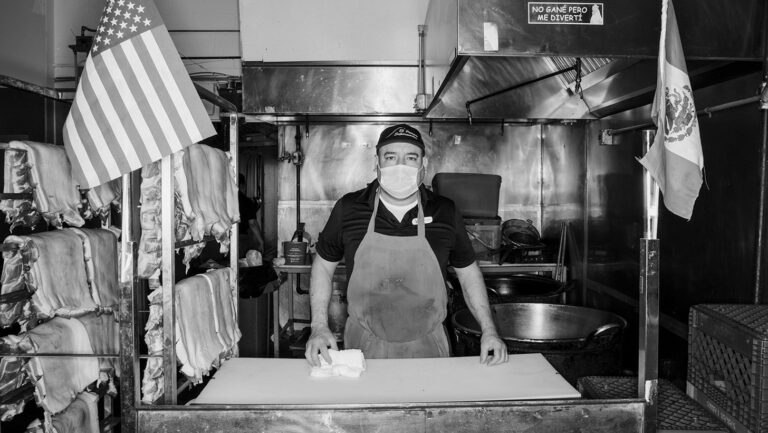Really good songs about particularly exciting or especially gory events passed from amateur musician to amateur musician over generations. In this way, the collective memory of a community was preserved.
The ballad tradition migrated from Spain to Spanish-speaking regions of the New World during the 1500s in the form of the corrido. Amazingly, that tradition is still alive and kicking to this day, albeit in massively altered forms. A Smithsonian Institution traveling exhibit currently residing at the National Hispanic Cultural Center traces the history of this musical form from its earliest primitive roots to its contemporary incarnations.
Creating an exhibit about music is never easy, but the Smithsonian and the National Hispanic Cultural Center have done an admirable job. Historical displays, costumes, instruments, album covers and other visual stimuli keep the eyes from getting bored, yet the organizers have focused on presenting as much exemplary music as possible. In other words, if you're going to visit this exhibit, and you definitely should, come prepared to listen.
You can borrow an audio wand and song book at the admission desk to guide you through the show. The audio wand allows you to listen to the songs being discussed. The song book provides lyrics along with English translations for those of you who, like me, comprehend Spanish at the sub-preschool level.
The earliest corrido examples in the exhibit are Old World ballads like “La Blancaniña” (“The Adulteress”) which were brought to the New World by the earliest Spanish settlers. Examples from more recent times include the 19th century “Los Ciboleros” (“The Buffalo Hunters”), a beautiful indita (gentle ballad form usually sung by women) that tells the story of a New Mexican named Manuel Maés who fell off his horse while hunting buffalo and speared himself with his own lance.
Early 20th century corridos often focused on the exploits of larger-than-life Mexicans like Pancho Villa and Emiliano Zapata who became folk heroes during the Mexican Revolution (1910-1920) by waging war against the ruling class. Similar corridos from the same era romanticized outlaws and gunslingers who, in the view of the songwriters, stood up for the rights of the poor and oppressed.
This style eventually mutated into the narcocorridos of recent years, songs that glamorize the violence associated with the drug underworld. On a wall with biographies of some of the most famous modern corrido composers, you'll see the name Chalino Sánchez, a Sinaloaese singer who achieved worldwide fame following a 1992 concert in which he returned gunfire at a member of his audience. Four months after this incident, Sánchez was found dead in a ditch with two bullets in his head. Such episodes illustrate why Sánchez and other purveyors of narcocorridos have become the Latin American equivalents of gangster rappers in the urban United States.
This is the seedier side of the tradition. Throughout the 20th century, however, corridos have often had a social bent, dramatizing the actions of labor organizers and other political activists.
The final part of the exhibit examines the corrido in New Mexico. A wall of headphones allows listeners to hear various field recordings, some of them quite recent, from towns all over New Mexico. These homegrown corridos document stories about everything from a 1932 mine explosion in Madrid to an effort by citizens from a small community near Santa Fe to prevent the construction of a golf course during the '90s. One song by Albuquerquean Miguelito Romero boasts the honor of being the first corrido composed about 9-11.
The tradition has continued to thrive into the 21st century. Yet while modern recording, marketing and distribution technologies have homogenized the form—erasing regional variations in favor of a sleeker, more commercialized product—corridos maintain a huge cultural power in the Spanish-speaking world.
Corridos Sin Fronteras: Ballads Without Borders runs through Dec. 5 at the National Hispanic Cultural Center, located at the intersection of Fourth Street and Avenida César Chávez. 246-2261.








